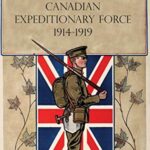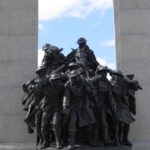Warfare in Pre-European Canada: The Struggles of Indigenous Nations
Long before European explorers and settlers set foot on the lands that would become Canada, the vast territory was home to hundreds of distinct Indigenous nations, each with its own culture, language, and way of life. These nations lived in diverse environments, from the dense forests of the Eastern Woodlands to the vast plains of the Prairies and the rugged coasts of the Pacific Northwest. Like many societies around the world, Indigenous peoples in what we now call Canada engaged in conflict. Warfare, in various forms, was a feature of life among many of these nations, shaping their politics, diplomacy, and culture long before the arrival of Europeans.
However, to understand Indigenous warfare, one must move beyond the image of large-scale battles common to European conflicts. Instead, warfare among Indigenous nations was typically more fluid and tied to specific cultural, spiritual, and economic goals. It was often about survival, honor, and prestige, and the consequences of both victory and defeat could shape the destinies of entire nations.
Warfare as a Way of Life: The Causes and Context
Warfare in pre-European Canada was not a constant, unrelenting feature of life, but it was far from rare. Indigenous groups engaged in conflicts for a variety of reasons, some of which mirrored the causes of warfare in other parts of the world—competition for resources, territorial disputes, and the desire for political dominance. However, many Indigenous wars were driven by other, more culturally specific factors. Honor and revenge played key roles in sparking conflicts, as did the need to assert spiritual dominance or to capture prisoners for adoption into the community.
Among the Iroquoian nations of the Eastern Woodlands, for example, warfare was often waged to avenge the death of a loved one, especially if that death had come at the hands of an enemy nation. In these cases, the objective of the conflict was not simply to defeat the enemy but to capture prisoners who could be adopted into the community, symbolically replacing the lost family member. These captives could be integrated into the group and become part of the society, or in other cases, they might be ritually tortured or killed to avenge the dead. This practice, known as “mourning wars,” reveals the deep cultural and spiritual significance that warfare could hold in these societies.
Similarly, the Plains Indigenous nations, such as the Blackfoot Confederacy, the Cree, and the Assiniboine, often engaged in raids to assert control over important hunting grounds or to capture horses and other resources from their rivals. On the plains, the introduction of the horse by the Spanish in the late 17th century transformed both warfare and society, creating a new dynamic in which mounted warriors could launch swift raids over vast distances.
In the Pacific Northwest, where nations like the Haida, Tlingit, and Tsimshian thrived, warfare was often tied to the complex social structure of the region. These nations, living along the coastal waters, frequently engaged in warfare to assert dominance, gain access to valuable resources like salmon, and enhance the prestige of their chiefs. Raids on neighboring villages were common, and the taking of slaves was a key objective. Among these groups, warfare was deeply intertwined with the potlatch, a ceremonial event where wealth and status were redistributed. Victories in battle often elevated a chief’s status and allowed for larger, more lavish potlatch ceremonies.
How Warfare Was Conducted: Strategy and Tactics
Indigenous warfare in pre-European Canada was often highly mobile and involved small, specialized groups of warriors. Unlike the large-scale pitched battles that were common in European warfare, most Indigenous conflicts were fought in small skirmishes or raids. These raids were typically swift and aimed at capturing resources, gaining prestige, or retaliating for previous attacks.
In many regions, surprise was a key element of warfare. Warriors would often travel long distances through forests, across rivers, or over plains to launch attacks on rival villages or camps. The ability to strike quickly and retreat just as rapidly was highly prized, and the dense forests of the east and the wide-open prairies of the west offered numerous opportunities for ambushes and surprise raids. These tactics minimized casualties on both sides and made it difficult for enemies to mount a significant defense.
Among the Iroquois Confederacy, the Huron-Wendat, and other nations in the Great Lakes region, the use of fortified villages, known as palisades, was common. These fortified settlements provided defense against enemy attacks, with walls made of tall wooden stakes and often surrounded by trenches. In the event of a raid, the villagers could retreat behind these walls, making it difficult for attackers to penetrate.
Indigenous warfare often involved psychological tactics as well. Warriors would paint their faces and bodies in symbolic patterns designed to invoke fear in their enemies. War dances, drumming, and chanting were also common before battle, with the intention of intimidating the enemy and invoking spiritual power.
In the Northwest Coast, naval power played a significant role in warfare. Large canoes, expertly crafted from cedar, allowed warriors to raid coastal villages or intercept enemy raiding parties at sea. The Haida, in particular, were known for their prowess as seafarers and raiders, often venturing far from their home islands to launch attacks. These canoe-based raids could be devastating, as they allowed for quick, surprise assaults on coastal villages.
Weapons of War: Tools of Combat
Indigenous warriors used a variety of weapons, many of which were designed for close combat. The most common weapon across most regions was the bow and arrow, which provided warriors with a reliable, long-range weapon for hunting and combat. Arrows were often tipped with stone points—flint or obsidian—or later with bone or metal as trade networks expanded. Bows were crafted from local woods and were designed for accuracy and portability.
Another widely used weapon was the war club, which took different forms depending on the region. In the Eastern Woodlands, warriors used clubs made from heavy hardwoods like maple or ash. These clubs often had a rounded or pointed head, sometimes embedded with stone or metal. In the Plains, war clubs were lighter and designed for use on horseback, where quick, powerful strikes were more effective. Some of these clubs featured stone or metal blades set into the head, making them deadly in close combat.
Spears and lances were also used, particularly in the Plains and Subarctic regions, where they were effective for both hunting and warfare. In the Pacific Northwest, warriors carried long spears and daggers, often made from bone or sharpened stone, and used them in raids and hand-to-hand combat. The craftsmanship of these weapons, particularly in the Northwest Coast, reflected the cultural value placed on artistry and status in warfare.
With the arrival of Europeans, Indigenous nations quickly adopted firearms into their arsenals. Muskets, obtained through trade, became a powerful addition to their traditional weaponry, though they often lacked the reliability and accuracy of the bow and arrow. However, firearms introduced a new dynamic into Indigenous warfare, as nations that could secure a steady supply of guns gained a significant advantage over their rivals.
The Consequences of Warfare: Victory, Defeat, and Diplomacy
The results of warfare among Indigenous nations could be profound, influencing not only the victor and the vanquished but also the broader political and social landscape. Victory in battle could bring prestige, honor, and tangible rewards like territory, captives, and resources. Successful raids often elevated the status of warriors, particularly the chiefs and leaders who organized them. Among the Haudenosaunee Confederacy, for example, successful warfare could enhance the standing of an entire clan, solidifying alliances and ensuring the flow of tribute from subjugated groups.
However, warfare also had consequences for the defeated. In some cases, entire communities could be displaced or destroyed. Defeat might result in the loss of land or hunting grounds, pushing groups into less desirable territories. In the Eastern Woodlands, defeated warriors might be taken captive and subjected to ritual adoption or execution, depending on the circumstances of the conflict and the cultural practices of the victors.
Despite the prevalence of warfare, diplomacy was also a key element in managing conflict. Treaties, alliances, and peace agreements were often used to resolve disputes and prevent further bloodshed. The Great Law of Peace, which governed the Haudenosaunee Confederacy, is one of the most famous examples of how Indigenous nations sought to mediate conflict through negotiation and diplomacy rather than warfare. The formation of alliances, particularly among the Iroquoian nations, allowed smaller nations to band together against more powerful enemies, creating a balance of power that could endure for generations.
Conclusion: Warfare in Indigenous Canada
Warfare in pre-European Canada was as complex and varied as the many Indigenous nations that inhabited the land. Far from being an endless cycle of violence, Indigenous warfare was often deeply tied to cultural, spiritual, and political objectives. It was shaped by the natural environment, the available resources, and the social structures of the various nations. While raids and conflicts could bring devastation, they could also bring renewal through the capture of prisoners, the acquisition of territory, or the elevation of leaders.
As Europeans began to arrive in North America, the dynamics of Indigenous warfare would change, with new weapons, new alliances, and new threats reshaping the continent. But before that time, Indigenous warfare remained a critical aspect of life in what is now Canada, shaping the relationships between nations and influencing the course of their histories.



